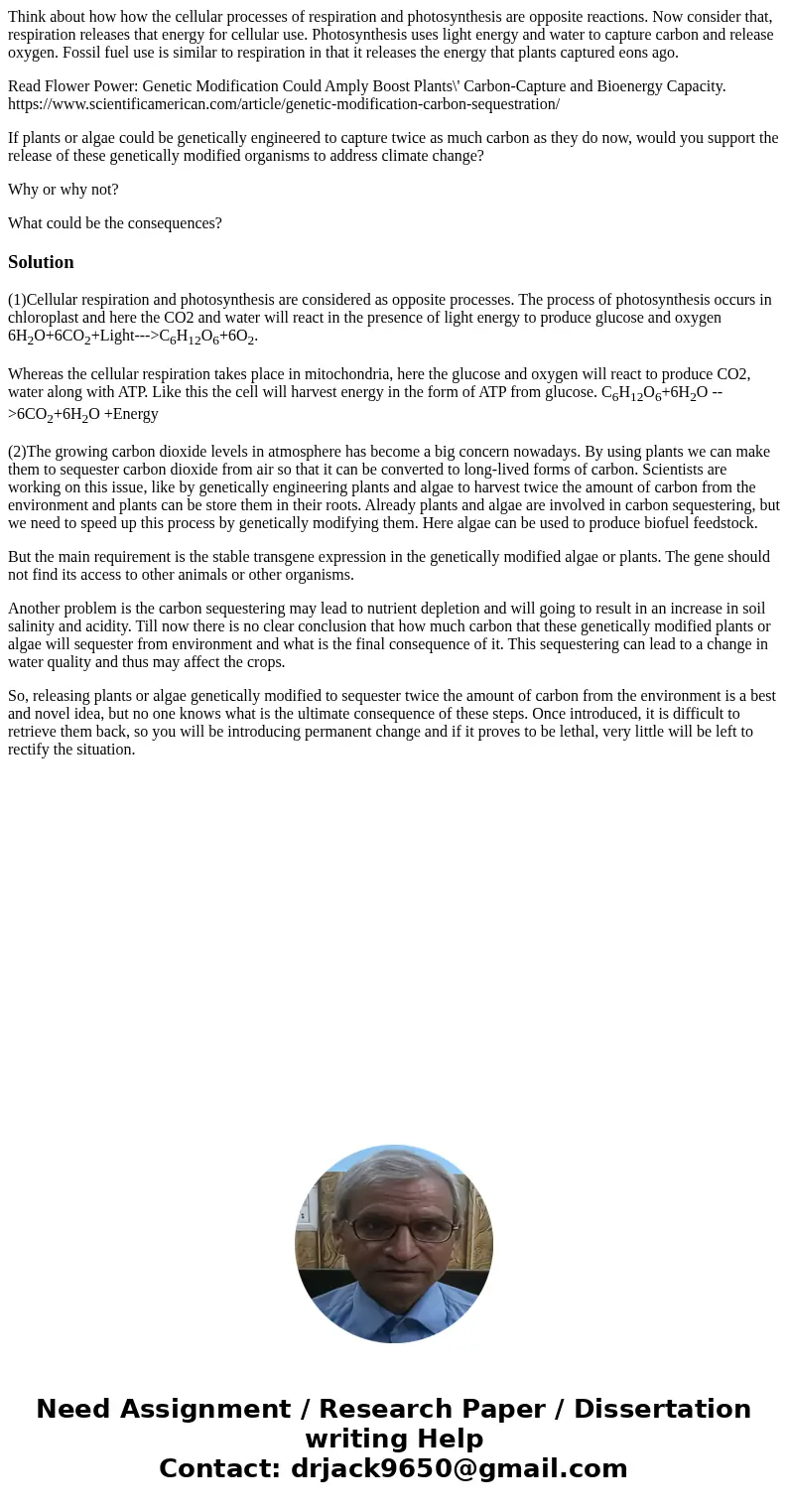Think about how how the cellular processes of respiration an
Think about how how the cellular processes of respiration and photosynthesis are opposite reactions. Now consider that, respiration releases that energy for cellular use. Photosynthesis uses light energy and water to capture carbon and release oxygen. Fossil fuel use is similar to respiration in that it releases the energy that plants captured eons ago.
Read Flower Power: Genetic Modification Could Amply Boost Plants\' Carbon-Capture and Bioenergy Capacity. https://www.scientificamerican.com/article/genetic-modification-carbon-sequestration/
If plants or algae could be genetically engineered to capture twice as much carbon as they do now, would you support the release of these genetically modified organisms to address climate change?
Why or why not?
What could be the consequences?
Solution
(1)Cellular respiration and photosynthesis are considered as opposite processes. The process of photosynthesis occurs in chloroplast and here the CO2 and water will react in the presence of light energy to produce glucose and oxygen 6H2O+6CO2+Light--->C6H12O6+6O2.
Whereas the cellular respiration takes place in mitochondria, here the glucose and oxygen will react to produce CO2, water along with ATP. Like this the cell will harvest energy in the form of ATP from glucose. C6H12O6+6H2O -->6CO2+6H2O +Energy
(2)The growing carbon dioxide levels in atmosphere has become a big concern nowadays. By using plants we can make them to sequester carbon dioxide from air so that it can be converted to long-lived forms of carbon. Scientists are working on this issue, like by genetically engineering plants and algae to harvest twice the amount of carbon from the environment and plants can be store them in their roots. Already plants and algae are involved in carbon sequestering, but we need to speed up this process by genetically modifying them. Here algae can be used to produce biofuel feedstock.
But the main requirement is the stable transgene expression in the genetically modified algae or plants. The gene should not find its access to other animals or other organisms.
Another problem is the carbon sequestering may lead to nutrient depletion and will going to result in an increase in soil salinity and acidity. Till now there is no clear conclusion that how much carbon that these genetically modified plants or algae will sequester from environment and what is the final consequence of it. This sequestering can lead to a change in water quality and thus may affect the crops.
So, releasing plants or algae genetically modified to sequester twice the amount of carbon from the environment is a best and novel idea, but no one knows what is the ultimate consequence of these steps. Once introduced, it is difficult to retrieve them back, so you will be introducing permanent change and if it proves to be lethal, very little will be left to rectify the situation.

 Homework Sourse
Homework Sourse